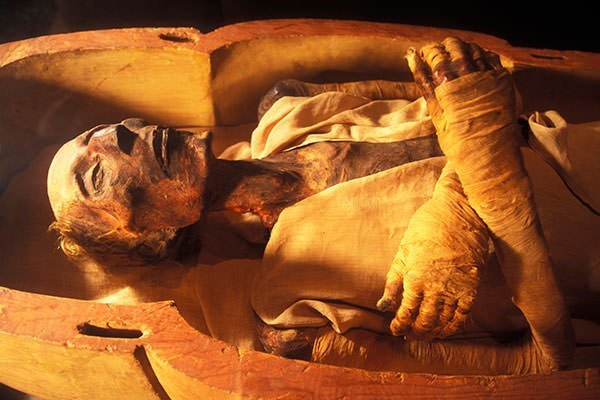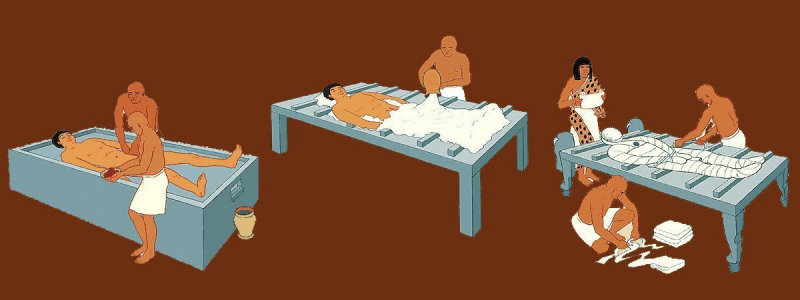Efficiency of Mummification Rests on not Allowing Moisture for Bacteria to Grow
Putrefaction is the second step of decomposition. Bacteria in it decompose the remaining organic matter. Bacteria are parasite bacteria that flourish in the damp environment of decomposing flesh and organs. Bacteria, on the other hand, require water or moisture to survive and function. Bacteria cannot grow in the absence of moisture. This concept is similar to that of drying foods to extend their shelf life.
As a result, mummification's purpose is to remove all moisture from the deceased body, both inside and out. As previously stated, this was accomplished using natron. To absorb any remaining moisture, the body was covered in layers of linen. Resin, a sticky organic substance, was used to fill the gaps between the layers, preventing moisture from entering the mummy. The resin was also placed to the coffin to seal it as an extra precaution. The efficiency of the mummification process was ensured by all of these factors.












